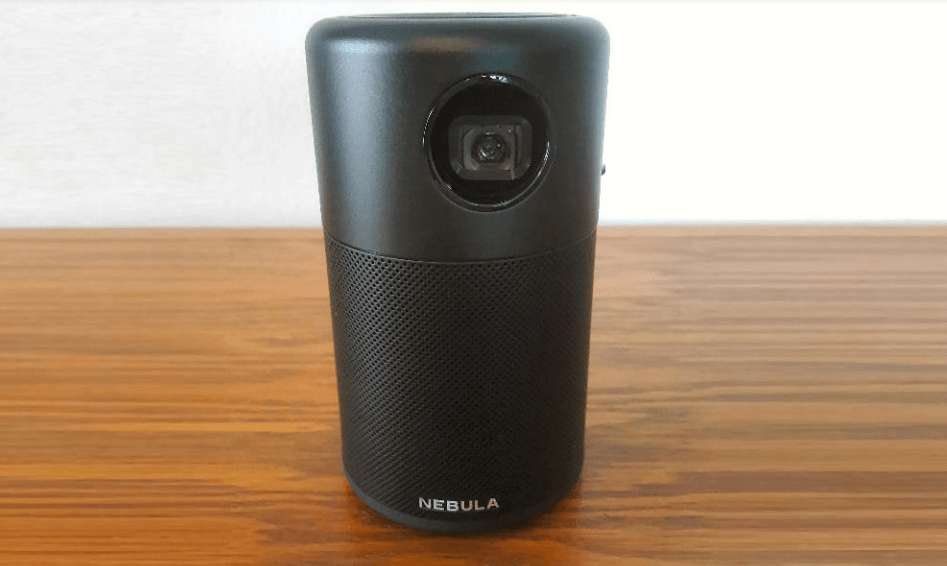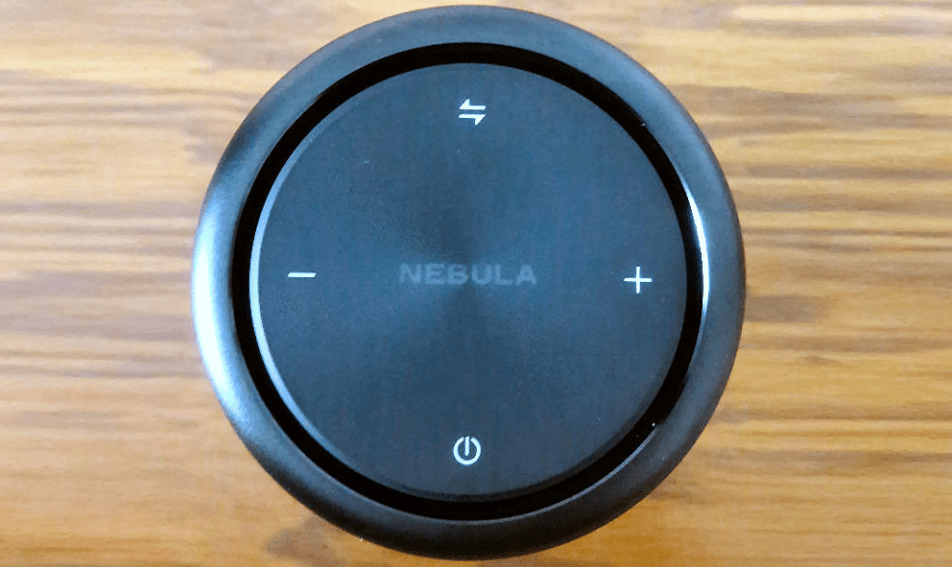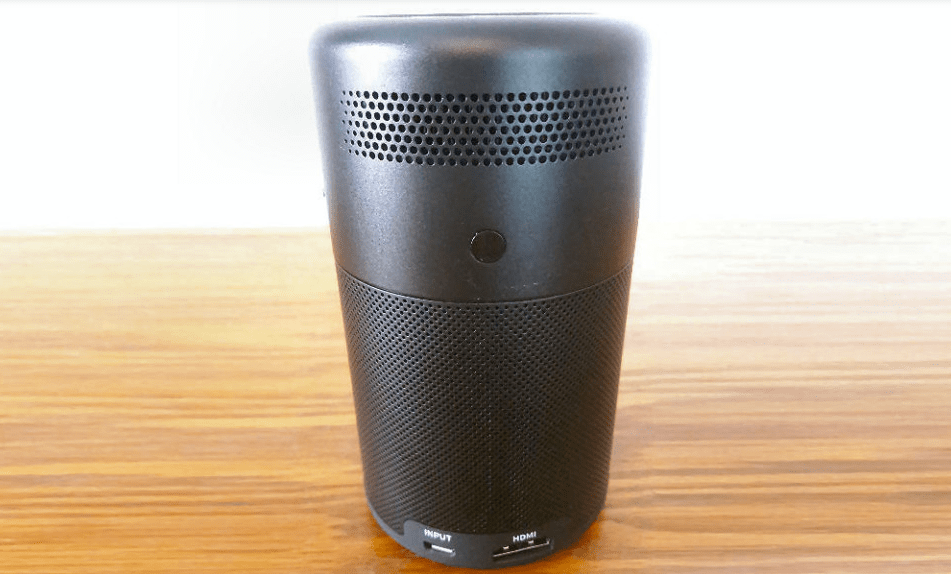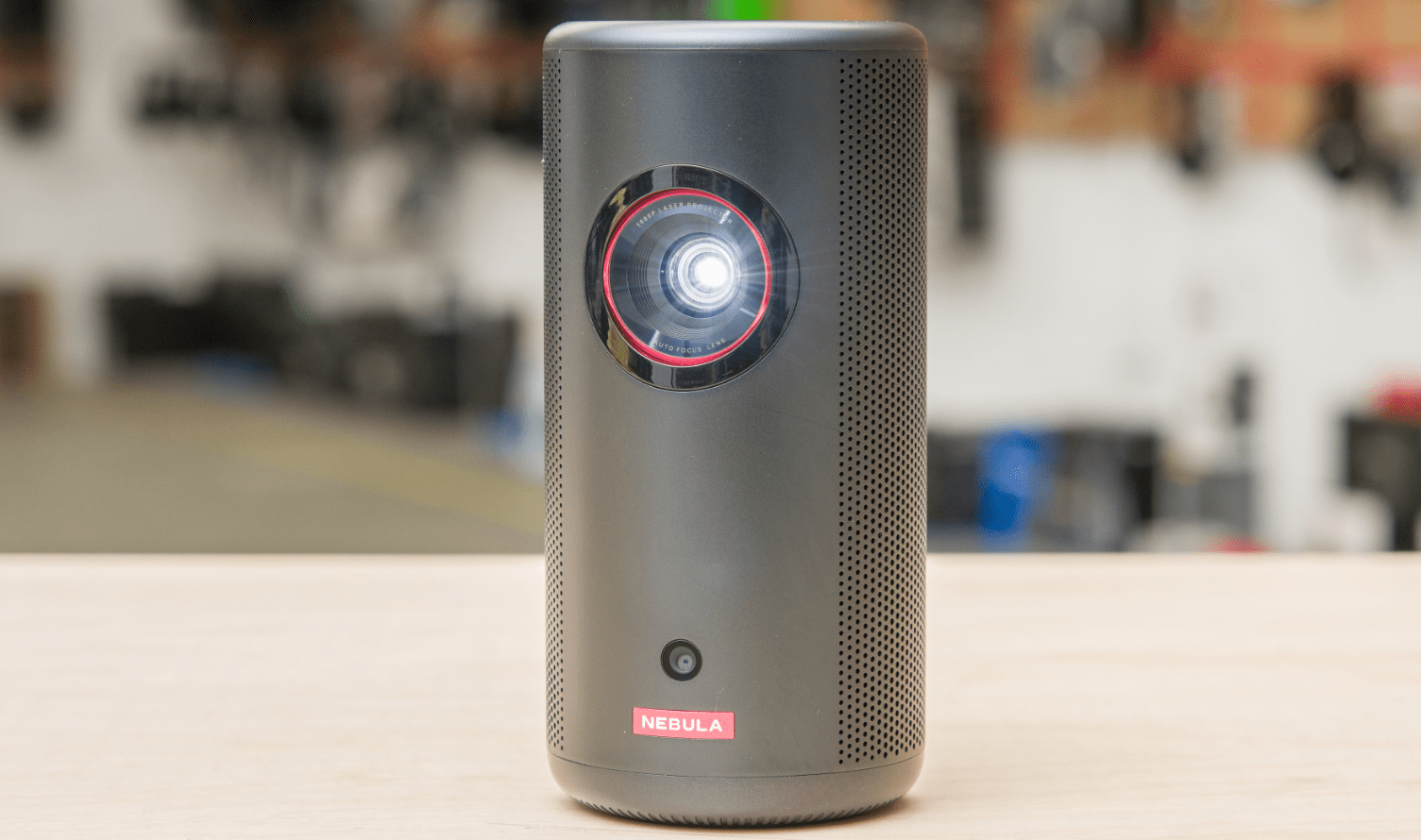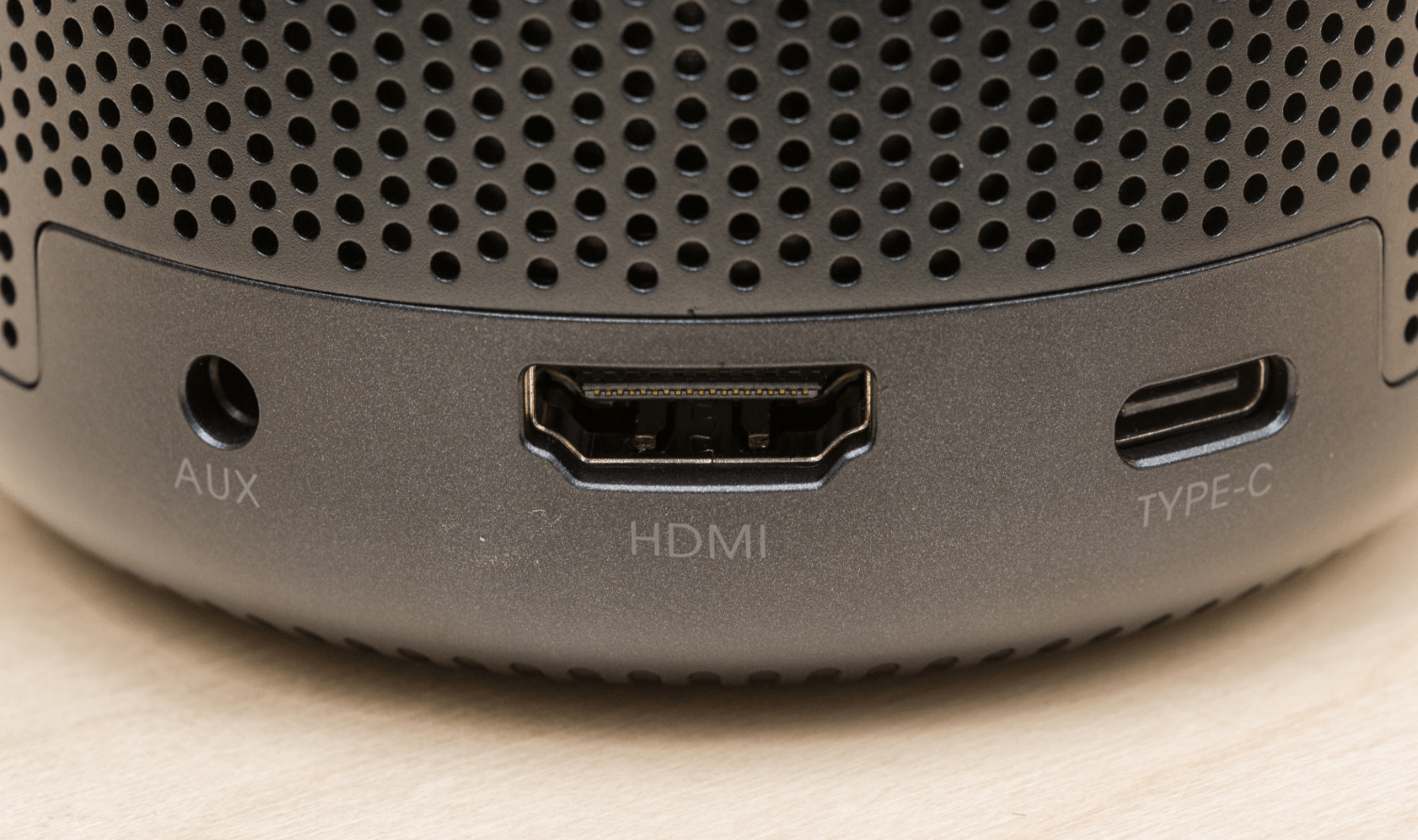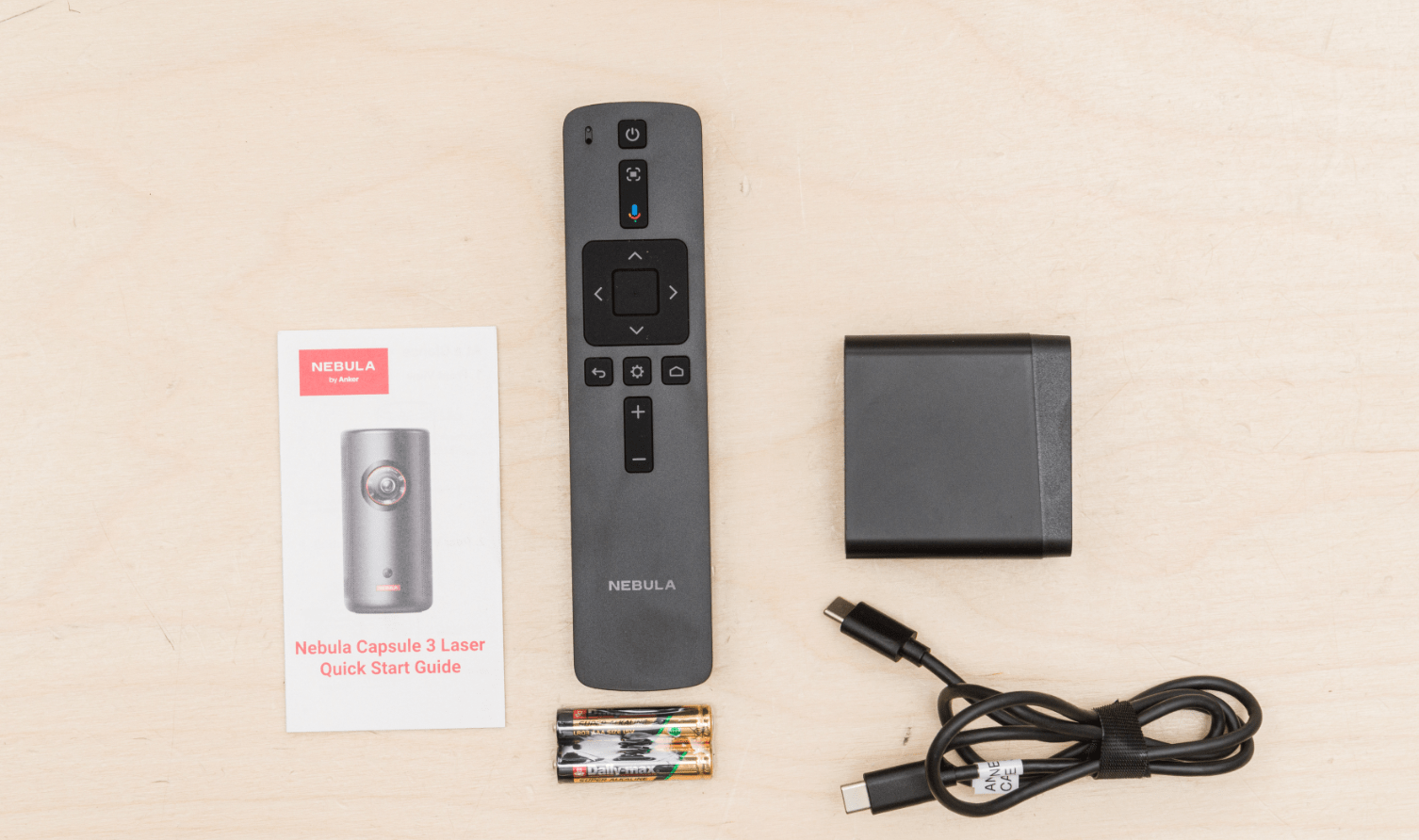At gagadget.com, your trust is our priority. We follow strict quality standards in our research, tests, and analysis of video projectors, to give you the best experience. Learn more
Nebula Capsule vs Nebula Capsule 3
Hey everyone! Today, I'm pitting two of the most popular portable projectors from Anker against each other: the Nebula Capsule and the Nebula Capsule 3 Laser. Both offer compact, grab-and-go designs, built-in batteries, and Android TV smarts for streaming anywhere. But they also have some key differences in brightness, resolution, throw ratio, and more that could make one a better fit for your on-the-go viewing needs.
I've spent hands-on time with both models in various settings, from hotel rooms to campsites to my own backyard. In this in-depth comparison, I'll share my experiences and test results to help you decide which Capsule will be your ultimate travel companion. Let's dive in!
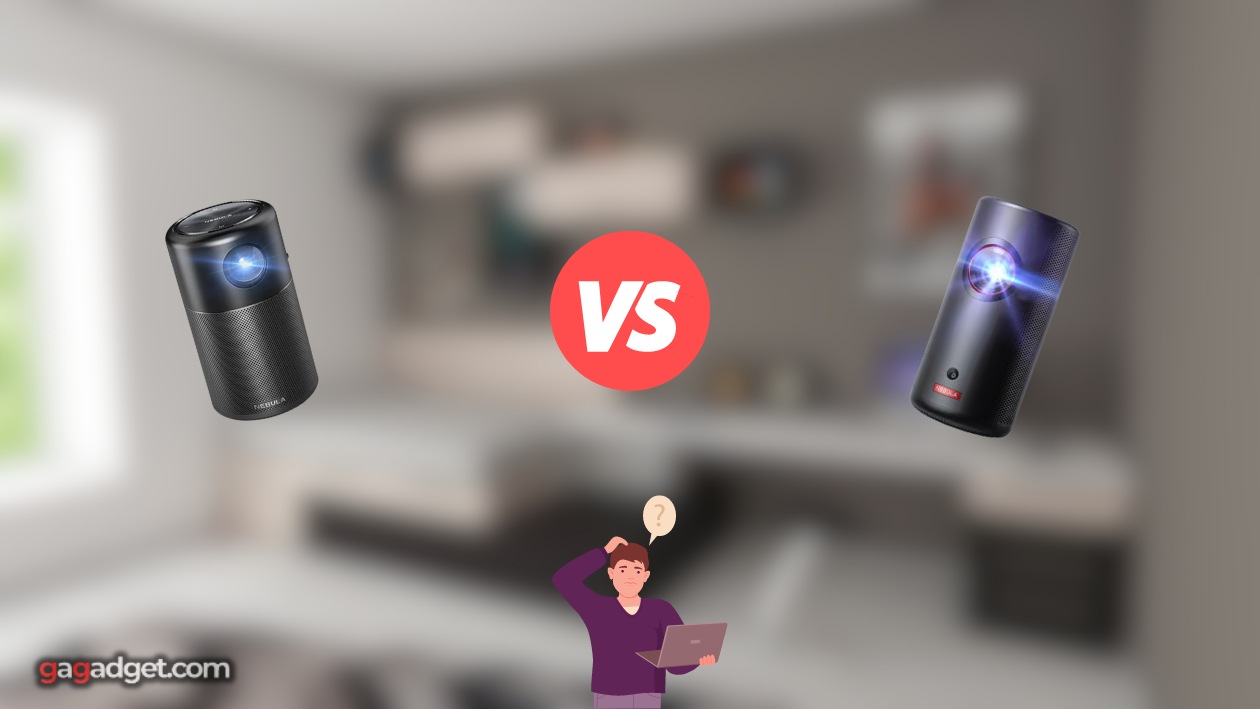
Anker Nebula Capsule vs Capsule 3 Laser: Quick Overview
Here are the high-level takeaways: The Anker Nebula Capsule and Capsule 3 are both highly portable projectors with built-in Android TV and batteries. The Capsule 3 has major advantages in brightness (300 vs 100 ANSI lumens), resolution (1080p vs 480p), and overall image quality thanks to its newer laser light engine. It also has a bit more throw flexibility and louder 8W speakers. The original Capsule counters with a longer 4-hour battery life and smaller, lighter design.
For most buyers, I recommend the Anker Nebula Capsule 3 Laser for its superior picture quality, brightness, and features. It's well worth the higher price for a dramatically better viewing experience, especially with ambient light. But if you prioritize maximum portability and battery life over image fidelity, the original Nebula Capsule remains a solid budget option.
Table of Contents
- Anker Nebula Capsule vs Capsule 3: Full Comparison
- Nebula Capsule 3 vs Capsule: Design
- Anker Nebula Capsule or Capsule 3: User Reviews
- Anker Nebula Capsule and Capsule 3 Alternatives
- Is the Anker Nebula Capsule 3 Worth the Upgrade?
Anker Nebula Capsule vs Capsule 3: Full Comparison
| Specs | Anker Nebula Capsule | Anker Nebula Capsule 3 |
| Image |

|
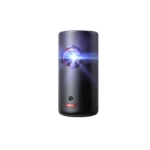
|
| Brightness | 100 ANSI lumens | 300 ANSI lumens |
| Native Resolution | 854 x 480 (WVGA) | 1920 x 1080 (Full HD) |
| Contrast Ratio | 400:1 | 500:1 |
| Display Tech | 0.2" DLP | 0.23" DLP |
| Light Source | LED | Laser |
| Light Source Life | 30,000 hours | 30,000 hours |
| Throw Ratio | 1.3:1 | 1.2:1 |
| Battery | up to 4 hours | up to 2.5 hours |
| Keystone Correction | Auto vertical | Auto horizontal + vertical |
| Built-in Speaker | 5W | 8W |
| Dimensions | 4.7" x 2.7" x 2.7" | 6.7" x 3.3" x 3.2" |
| Weight | 1.04 lbs | 2.14 lbs |
| Release Year | 2017 | 2022 |
The most noticeable difference between these two projectors is resolution. The Capsule 3 delivers full 1080p HD from its 0.23" DLP chip, a huge upgrade over the original Capsule's 854 x 480 WVGA resolution. In my testing, this translated to dramatically sharper text, finer details in photos and videos, and an overall cleaner, clearer picture - especially noticeable on 80"+ sizes.
The Capsule 3 is also three times brighter at 300 ANSI lumens vs the Capsule's 100 lumens. This allows it to maintain a punchier, more saturated image when fighting ambient light. In hotel rooms and tents with some daylight filtering in, the Capsule 3 still produced a very watchable picture while the Capsule looked washed out. For nighttime use, both are sufficiently bright.
Contrast is similar between the two at 400:1 on the Capsule and 500:1 on the Capsule 3. Neither will deliver inky blacks like a home theater projector but I was pleasantly surprised by the depth and shadow detail, again with a slight edge to the Capsule 3. Both utilize dynamic contrast enhancement to optimize dark scenes on the fly.
The biggest reason for the Capsule 3's superior image quality is its newer laser phosphor light engine compared to the Capsule's basic LED. Lasers offer higher brightness, wider color, and better long-term stability vs LEDs. The Capsule 3's "LaserForge" tech also supports HDR10 content and frame interpolation up to 60fps for judder reduction, further improving the viewing experience.
For audio, the Capsule 3 bumps up the power to 8W from the Capsule's 5W. It gets noticeably louder with deeper bass and clearer dialogue. The 270-degree speaker also does a decent job simulating surround effects despite the mono configuration. But for critical listening, I still recommend pairing either projector with external Bluetooth speakers.
As for portability, the Capsule has a slight edge. At 4.7" tall and just over a pound, it's about 30% smaller and half the weight of the 6.7", 2.14-pound Capsule 3. This makes it even easier to slip into a bag or backpack for on-the-go use. The Capsule also boasts longer battery life at up to 4 hours vs the Capsule 3's 2.5 hours, though both will easily last a full movie.
Both projectors feature auto keystone correction to quickly square up the image. The Capsule handles vertical adjustments while the Capsule 3 adds horizontal correction for easier off-angle placement. I found the auto settings reliable on both but you can also dial in keystone manually if needed.
The Android TV experience is very similar between the two generations, with the Capsule 3 running a newer version (11.0 vs the Capsule's 7.1). Performance is snappy on both with easy access to all the major streaming apps like Netflix, YouTube, and Hulu. The Capsule 3 adds Chromecast support for easy casting from mobile devices.
Rounding out the feature list, both offer a standard tripod mount, USB-A media playback, screen mirroring via Miracast, and an intuitive companion app for remote control and settings. The Capsule 3 upgrades to HDMI 2.1 vs 1.4 on the Capsule for higher bandwidth sources. It also has a more tactile "digital crown" inspired by the Apple Watch for menu navigation.
Ultimately, while the original Capsule remains a capable entry-level portable projector, the Capsule 3 delivers such a massively improved viewing experience that it's hard to recommend the older model for anyone but the most space-conscious travelers. The 1080p resolution, laser-powered brightness, and fuller sound take it from a novelty to a legitimate pint-sized theater.
Nebula Capsule 3 vs Capsule: Design
The Anker Nebula Capsule and Capsule 3 share the same basic cylindrical shape inspired by a soda can. But they differ in size, materials, and a few key design elements.
Anker Nebula Capsule Design
Anker Nebula Capsule 3 Design
The original Capsule is the smaller of the two at 4.7" tall, 2.7" in diameter, and 1.04 pounds. Its matte black body has a premium, soft-touch feel with perforated end caps for heat dissipation and speaker airflow. Up top you'll find capacitive buttons for power and volume along with an IR receiver.
The Capsule 3 scales up to 6.7" tall, 3.3" wide, and 2.14 pounds to accommodate the larger battery, speakers, and internal components. The design language is similar but with a two-tone gray housing and a more prominent "digital crown" inspired by the Apple Watch. This allows for easier menu navigation and settings control.
Both have a fixed focal length lens offset to one side (left on the Capsule, right on Capsule 3) to avoid glare and shadows when projecting at an angle. The Capsule 3 adds powered autofocus while the Capsule relies on manual focusing via a side dial. I found the Capsule 3 snappier and more accurate at locking focus across a variety of distances.
On the rear of each projector, you'll find a full-size HDMI port, USB-A for media playback or power, and a DC power input. The Capsule uses HDMI 1.4 while the Capsule 3 upgrades to HDMI 2.1 for higher resolutions and frame rates. Both also have a threaded tripod mount on the bottom for more flexible placement.
The included remotes are fairly basic IR affairs but get the job done. The Capsule 3's clicker is a bit larger with more dedicated buttons for Google Assistant, app shortcuts, and keystone correction. But both are intuitively laid out and have a solid, clicky feel.
Overall, the Capsule 3 feels like a more substantial and refined product than the original Capsule. The metal housing, digital crown, and autofocus add a level of precision and user-friendliness befitting the higher price. But both are impressively portable and well-built for their size and intended use.
Anker Nebula Capsule or Capsule 3 Laser: User Reviews
Let's see what actual buyers have to say about their experiences with the Nebula Capsule vs Capsule 3:
Anker Nebula Capsule Owner Reviews
Praises: "I can't believe how small and light this thing is - it fits in the palm of my hand! The perfect travel companion for movies and shows on the go."
"The 4-hour battery life is clutch for outdoor movie nights and impromptu gaming sessions. I love not being tethered to an outlet."
***
Drawbacks: "The 480p resolution is pretty low by modern standards. Text looks fuzzy and compression artifacts are noticeable in dark scenes."
"100 lumens is really only enough for a very dark room. In even moderate ambient light the picture gets washed out quickly."
Anker Nebula Capsule 3 Laser Owner Reviews
Praises: "The jump to 1080p and 300 lumens is a game-changer. I'm blown away by how crisp and vibrant the image is for such a tiny projector."
"The auto keystone and focus work like a charm - I just plop it down and it figures out the rest. So much easier than fiddling with dials and menus."
***
Drawbacks: "The 2.5-hour battery life is a step down from the original Capsule. I find myself having to plug in mid-movie more often than I'd like."
"It's not exactly pocket-friendly anymore. The larger size and weight make it more of a 'pack' than a 'slip in your jeans' projector."
Overall, Nebula Capsule owners love the ultra-compact form factor and grab-and-go convenience. The 4-hour battery and palm-sized design are perfect for impromptu movie nights or gaming sessions. However, many wish for higher resolution and brightness to improve image clarity and combat ambient light.
Nebula Capsule 3 buyers rave about the huge leap in picture quality thanks to the 1080p resolution, 300-lumen laser engine, and HDR support. The auto keystone and focus are also popular for hassle-free setup. Complaints are relatively minor, with some lamenting the shorter battery life and larger size compared to the original Capsule.
Both projectors earn praise for the Android TV interface, which offers snappy performance and easy access to popular streaming apps. The speakers also impress for their size, though most recommend pairing with a larger Bluetooth speaker or soundbar for the best audio experience.
Anker Nebula Capsule and Capsule 3 Alternatives
If you're not sold on either the Nebula Capsule or Capsule 3, here are a couple of other excellent portable projectors to consider:
- ViewSonic M1 Mini: An ultra-compact 1080p LED projector with a built-in battery, premium Harman Kardon speakers, and smart stand for easy angle adjustment;
- XGIMI Halo: A powerful 1080p DLP projector with Android TV, 800 ANSI lumens, HDR10, and a 2-hour battery life in a sleek, portable design.
The ViewSonic M1 Mini is one of the smallest 1080p projectors on the market. At just 4" tall and 0.8 pounds, it's even more pocketable than the Nebula Capsule while offering superior resolution. You also get a ingenious built-in stand that doubles as a lens cover, plus USB-C connectivity for modern devices. Just note the max 50 lumens brightness is only suited for dark environments.
On the higher end, the XGIMI Halo is a compelling Capsule 3 alternative with similar features like Android TV, auto focus/keystone, and a built-in battery. It gets even brighter at 800 ANSI lumens while maintaining 1080p sharpness, making it more versatile for daytime use. The sleek white chassis and carrying bag are nice touches for travelers.
Is the Anker Nebula Capsule 3 Worth the Upgrade?
After extensive hands-on testing, it's clear that the Anker Nebula Capsule 3 is a massive upgrade over the original Nebula Capsule in almost every way. The 1080p resolution, 300-lumen laser light engine, and improved contrast deliver a far superior viewing experience, especially with ambient light. Throw in the better speakers, auto keystone/focus, and updated Android TV interface and it's really no contest for the vast majority of buyers.
That said, the Capsule 3's larger size and shorter battery life do slightly diminish its portability compared to the original Capsule. If you value the absolute smallest form factor and longest untethered playback above image quality, the Capsule remains a decent budget option. It's also a full $200 cheaper, making it more accessible for casual or first-time buyers.
But in my opinion, the Capsule 3's huge performance advantages far outweigh the minor tradeoffs in size and stamina. The difference between 480p and 1080p is night and day, as is 100 lumens vs 300 lumens. The auto focus and keystone are also game-changers for quick, frustration-free setup. Unless you absolutely need the longest battery or cheapest price, the Capsule 3 is well worth the premium.
As someone who frequently travels for both work and play, I can confidently say the Anker Nebula Capsule 3 Laser has earned a permanent spot in my bag. The winning combo of 1080p crispness, LED-beating brightness, and grab-and-go convenience make it an unbeatable road companion. Whether I'm presenting in a boardroom, relaxing in a hotel, or hosting a backyard movie night, it consistently rises to the occasion with big, beautiful images and sound. If that sounds like your use case, don't hesitate to snag one - your on-the-go A/V experience will never be the same!
Go Deeper:
